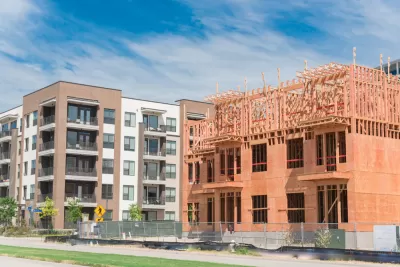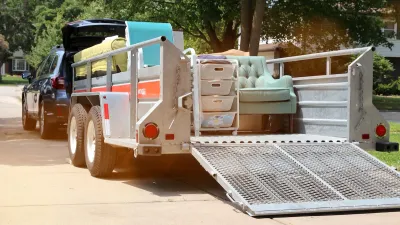Some of the fastest-growing metro areas in the country are also the ones building the most new housing.

What do the fastest-growing parts of the country have in common? According to a piece by Justin Fox in Bloomberg CityLab, it’s not lower taxes, better weather, or lower crime rates. It’s the availability of housing.
According to Fox, the South and inland West, home to 46.3 percent of the U.S. population, accounted for 65.8 percent of new housing construction between 2020 and 2022. Admittedly, “Many of these metro areas are able to build so much more housing in part because they’re surrounded by mostly flat land on which developers can easily plunk down new subdivisions.” Other, more geographically challenging, cities, like Seattle, have taken conscious actions to promote multifamily development. “Apartments also made up the majority of new housing permitted in and around Austin, Salt Lake City and Denver, and more than 40% in metro Orlando, San Antonio and Richmond.”
Meanwhile, while the nation’s biggest cities and walkable urban areas remain desirable—and, despite early pandemic predictions, nowhere near ‘dead’—they are also less and less affordable for most U.S. households.
See the source article for charts detailing the most and least affordable cities in the country, as well as rates of housing construction.
FULL STORY: What Do US Growth Zones Have in Common? They Build Housing

Alabama: Trump Terminates Settlements for Black Communities Harmed By Raw Sewage
Trump deemed the landmark civil rights agreement “illegal DEI and environmental justice policy.”

Planetizen Federal Action Tracker
A weekly monitor of how Trump’s orders and actions are impacting planners and planning in America.

The 120 Year Old Tiny Home Villages That Sheltered San Francisco’s Earthquake Refugees
More than a century ago, San Francisco mobilized to house thousands of residents displaced by the 1906 earthquake. Could their strategy offer a model for the present?

San Francisco Opens Park on Former Great Highway
The Sunset Dunes park’s grand opening attracted both fans and detractors.

Oregon Legislature to Consider Transit Funding Laws
One proposal would increase the state’s payroll tax by .08% to fund transit agencies and expand service.

Housing Vouchers as a Key Piece of Houston’s Housing Strategy
The Houston Housing Authority supports 19,000 households through the housing voucher program.
Urban Design for Planners 1: Software Tools
This six-course series explores essential urban design concepts using open source software and equips planners with the tools they need to participate fully in the urban design process.
Planning for Universal Design
Learn the tools for implementing Universal Design in planning regulations.
Clanton & Associates, Inc.
Jessamine County Fiscal Court
Institute for Housing and Urban Development Studies (IHS)
City of Grandview
Harvard GSD Executive Education
Toledo-Lucas County Plan Commissions
Salt Lake City
NYU Wagner Graduate School of Public Service





























